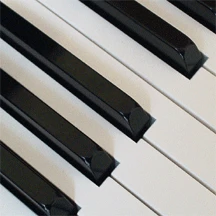Story behind the song
CELEBRATORY & EXUBERANT, this is the most famous movement of the Four Seasons. In fact, the joyous introduction is one of the most quoted passages in all music. The main theme leads into some tone painting of birdcalls, breezes and brooks. Lightning and thunder darken the middle of piece, but the calmer sounds of nature come back slowly, and the infectious opening themes are reprised.
*** About the Album "Four Seasons Jazz" ***
In 1725, Antonio Vivaldi published his Opus 8, which included four string concertos he called "The Four Seasons". Part of the enduring popularity of these works is surely due to the programmatic implications of the title. A cycle about something as visual as the change of seasons is an instant marketing vehicle in a post-MTV age where musical longevity is tied to personalities, events, movies and other extra-musical associations. As if the title demanded specific illustration, Vivaldi himself linked several sonnets about the seasons to his concertos, providing literal cues to the musical goings-on.
Each of the Seasons consists of three movements, the two fast outer sections framing a slower inner one. The fast movements have repeating sections called ritornelli, from the Italian meaning "to return". The ritornello is usually the first section heard in these works, and bridges the other highly varied and virtuosic episodes for solo violin. The slow movements are quite ballad-like and typically present an exquisite melody and then restate it with elaboration.
All these movements are far too short by modern standards. While the fast sections I rendered faithfully, with some allowances for pianistic rubato, the tunefulness of the slow movements begged for more treatment. As such, I play each slow movement twice, the first generally faithfully to Vivaldi's score, but the second in a more rhapsodic manner.
The restyled second half of slow movement of Summer, for instance, gets a Moonlight Sonata make-over, while keeping the cantabile line and supporting harmonies in tact. Autumn's slow movement begins as a primordial wash of dark piano and gong, and morphs into a smooth walking bass line as per Vivaldi's notated basso continuo.
The Seasons are quite light in texture, and I wanted to retain this buoyant quality rather than give in to thick piano chords. Only during the pastoral bare fifths of the best known sections of Spring do I reinforce supporting harmony. The many solo sequences for the most part remain as homophonic as they were scored, an unusual but captivating texture on piano. The one exception is in the second half of Winter's slow movement, where I embellish and harmonize the beautiful theme. On the other hand, in sections with long bass notes, a bass pulse is needed to keep the formerly bowed pedal drone from totally evaporating and leaving the upper registers exposed.
The programmatic qualities of the Seasons posed many challenges. The chirpings of Spring, rumblings of Summer, stompings of Autumn, and shiverings of Winter all demanded creative solutions for articulation on the piano. Here, percussion proved to be especially helpful. Hi-hats, drums and cymbals provided a sparkling vocabulary to dress-up Vivaldi's many dramatic twists and turns. Bass and snare drum freely step in and out when required to drive motoric rhythms, of which there are many.
Autumn's fast movements, in particular, have several unison chord passages that get sonic relief when a scintillating coating of percussion is superimposed on them. Crisp wind chimes sprinkle a little magic on Winter, and silvery cymbal splashes infuse mystery in the quieter parts of Spring and Summer.
While these pieces are jazz-like, for the most part they stay away from improvisation and bluesy harmony. The bass and percussion function to accent forms and textures. They call very little attention onto themselves, and as such are more subdued than typical jazz recordings. There are no jazz solo passages here, wh

